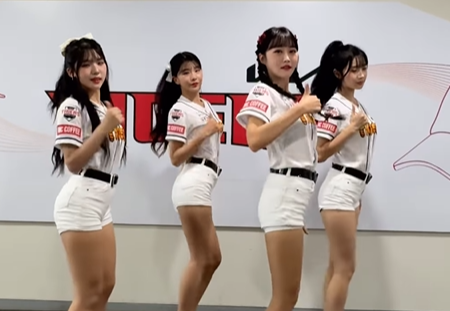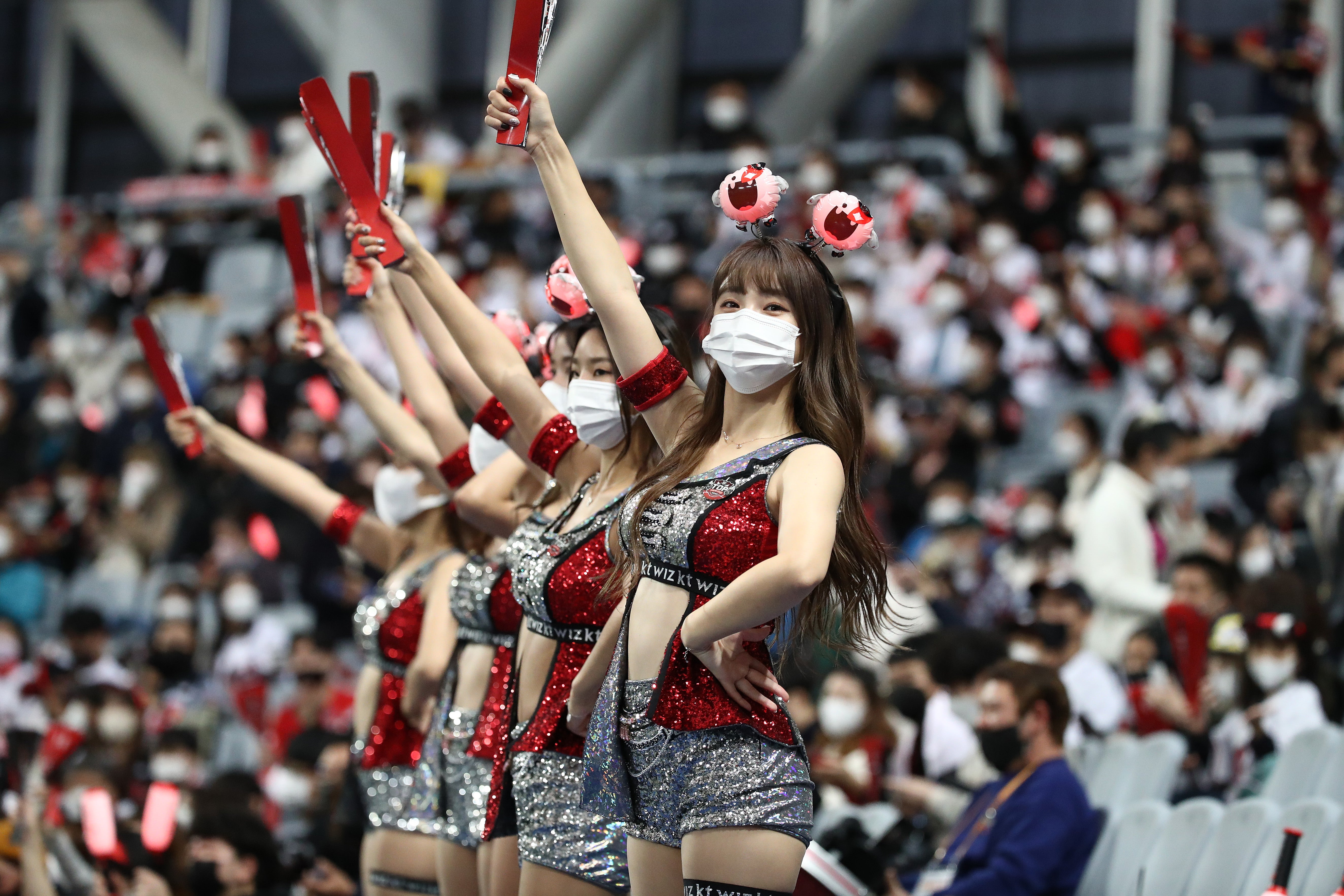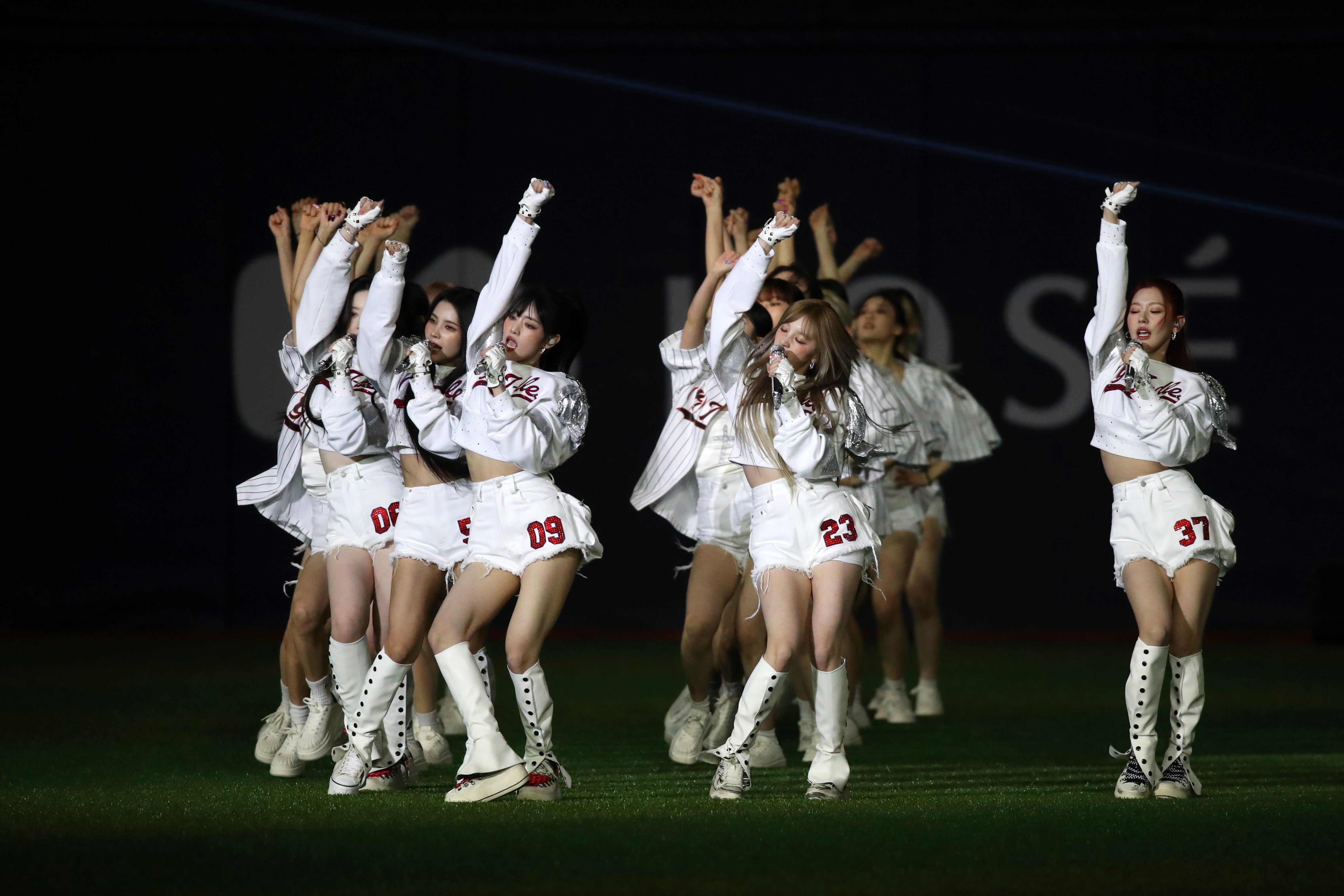The Independent's journalism is supported by our readers. When you purchase through links on our site, we may earn commission.
What is Pikki Pikki, the viral cheerleading dance from Korea taking the world by storm?
Popular dance move started with cheerleaders of professional baseball team KIA Tigers

A cheerleading dance trend from 2022, seen primarily at baseball games in South Korea, is suddenly surging in popularity on social media and causing worldwide confusion in the process.
The Pikki Pikki dance, as it is popularly known, started with the cheerleaders of the South Korean professional baseball team KIA Tigers.
The simple move, which involves moving one’s hands up and down with thumbs up, is set to a lively drumbeat and a squeaky sound. The dance is performed only when the Kia Tigers pitcher strikes out an opposing batter, as a way for the cheerleaders to applaud their team and tease the opposition.
In one of the first videos to go viral, one that has since been replicated by K-Pop stars and singer Olivia Rodrigo, cheerleader Lee Joo-eun is interrupted while fixing her makeup. She gets up immediately, performs the routine flawlessly, and returns to her seat, not a hair out of place and no change in her expression.
“We emphasise setting moves and outward expressions to match the tone and mood of the music while making it easy for the fans to follow,” Lee Si-Young, the president of Apex Communications, which represents the cheer squad, told The New York Times.
“We felt that it would fit more to have a more casual feel rather than something energetic or powerful.”
The 18-second video was first uploaded on YouTube and quickly spread to TikTok, raking up tens of millions of views. Curious TikTok users started looking up Lee Joo-eun, and discovered other cheerleaders from her team, and then started posting their own versions, adding to the hype.

There has since been a great deal of global interest in the dance, in particular from the US.
Both the US and South Korea share a love of baseball – but the atmosphere at games in the two countries couldn’t be more different. While games in the US see relatively long periods where the audience calmly watches, only cheering when something major happens on the field, games in South Korea are raucous throughout.
No baseball game in South Korea is complete without “cheer culture”. Fans of each team show up in team strips and with inflatable sticks, and are led by cheerleaders in short, personalised chants specific to their team. Not just between innings, cheerleaders in striking outfits perform fun, lively routines throughout the game to keep the crowd’s energy high, and will sometimes even lead “cheer battles”.
“Korean baseball is somewhat like a concert,” Boka Gang, a Doosan fan from Hokkaido in Japan, told ABC News. “I love cheering for my favourite team in this loud and fancy manner that can never be found in my country.”
The festival atmosphere is added to by musical performances, with popular K-Pop groups booked to deliver pregame shows. In March this year, girl groups Aespa and (G)I-dle performed at the Major League Baseball regular season openers in Seoul.

Food, which plays a big role in Korean culture and has been pivotal in popularising the Hallyu trend globally, is also aplenty at baseball games. Chi-maek, a portmanteau of the words “chicken” and “maekju”, Korean for beer, is one of the most popular snacks, followed by a dish of rice cakes stir fried in a hot pepper paste called Tteokbokki, braised pig’s trotters, and crispy fried shrimp.
Some stadiums even allow barbecues for fans who want to grill, while others have special snacks like stews. Almost all stadiums allow patrons to bring their own food and drink, allowing those on tighter budgets to take part – another departure from the US, where policies vary from stadium to stadium.
While the personal cheers, dance trends, and specialty food may seem like harmless fun, it plays a great role in introducing foreign fans to South Korean baseball as well as the local culture as a whole.
“It’s interesting to watch such fervent fandoms in sports. We cannot see such a culture elsewhere,” Singapore resident Janabel Lie said.
“It’s a ballpark experience that only South Korea can offer,” Bae Soohyun, 39, a cheerleader for South Korea’s national team, told The New York Times.
Join our commenting forum
Join thought-provoking conversations, follow other Independent readers and see their replies
Comments
Bookmark popover
Removed from bookmarks